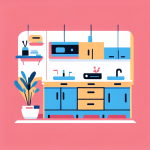Introduction to Floating Bookshelves: More Than Just Shelves
Floating bookshelves have revolutionized interior design, offering a blend of aesthetics and functionality that traditional shelves cannot match. These sleek, wall-mounted structures create the illusion of levitation, transforming plain walls into dynamic focal points. Unlike conventional bookshelves, floating bookshelves are anchored to the wall without visible brackets, giving rooms a clean, modern look. Their minimalist design makes them ideal for small spaces, as they avoid the clutter of bulky furniture while providing essential storage.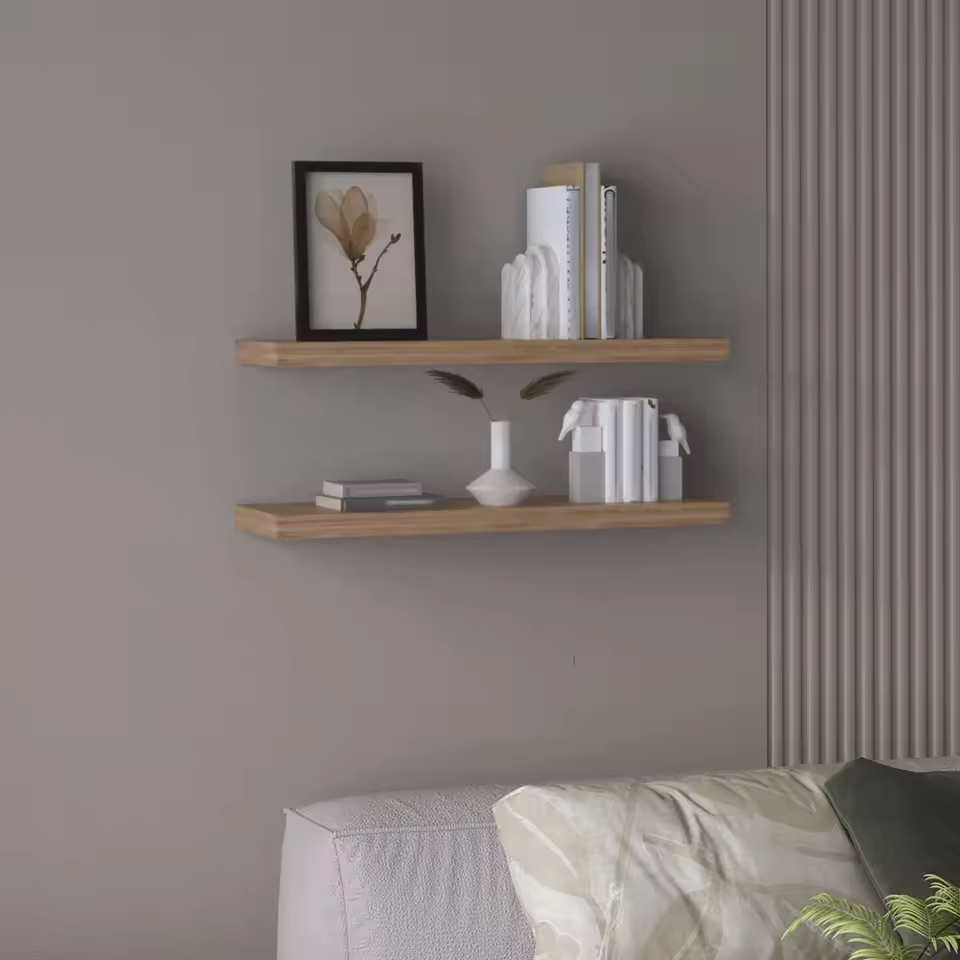
The term “floating bookshelves” might suggest they’re only for books, but their versatility extends far beyond. They can display art, house electronics, or even serve as TV stands. For homeowners seeking a balance between form and function, floating bookshelves are a game-changer. However, their popularity has led to a market saturated with options, making it crucial to understand key factors like material selection, installation methods, and design compatibility.
The Aesthetic Appeal of Floating Bookshelves
Floating bookshelves redefine interior design by merging minimalist elegance with functional beauty. Their signature “levitating” appearance creates an illusion of lightness, transforming plain walls into dynamic focal points. Unlike bulky floor-standing shelves, they avoid clutter, giving rooms a clean, modern vibe that aligns with contemporary trends.
Their visual impact stems from several factors:
- Clean Lines and Hidden Hardware: Brackets (like bookshelves with brackets seamlessly integrated into the design) ensure a seamless look, while minimalist profiles emphasize simplicity.
- Customizable Layouts: Adjustable heights and staggered arrangements let users tailor layouts to match architectural features—such as accentuating fireplaces or sloped ceilings.
- Material Versatility: Options range from warm wood tones to sleek metal or glass, allowing harmony with any decor, from industrial to Scandinavian.
These shelves also serve as artistic canvases. Displaying plants, art, or curated decor turns them into storytelling spaces. For instance, a glass shelf paired with geometric sculptures adds modern drama, while wooden tiers with books and vases evoke cozy sophistication.
Moreover, floating bookshelves optimize visual balance. By anchoring tall walls or dividing open-plan spaces, they guide the eye without overwhelming the room. Their adaptability—from narrow hallways to expansive living areas—makes them a universal aesthetic solution.
In essence, these shelves are more than storage—they’re transformative design tools that harmonize form, function, and creativity.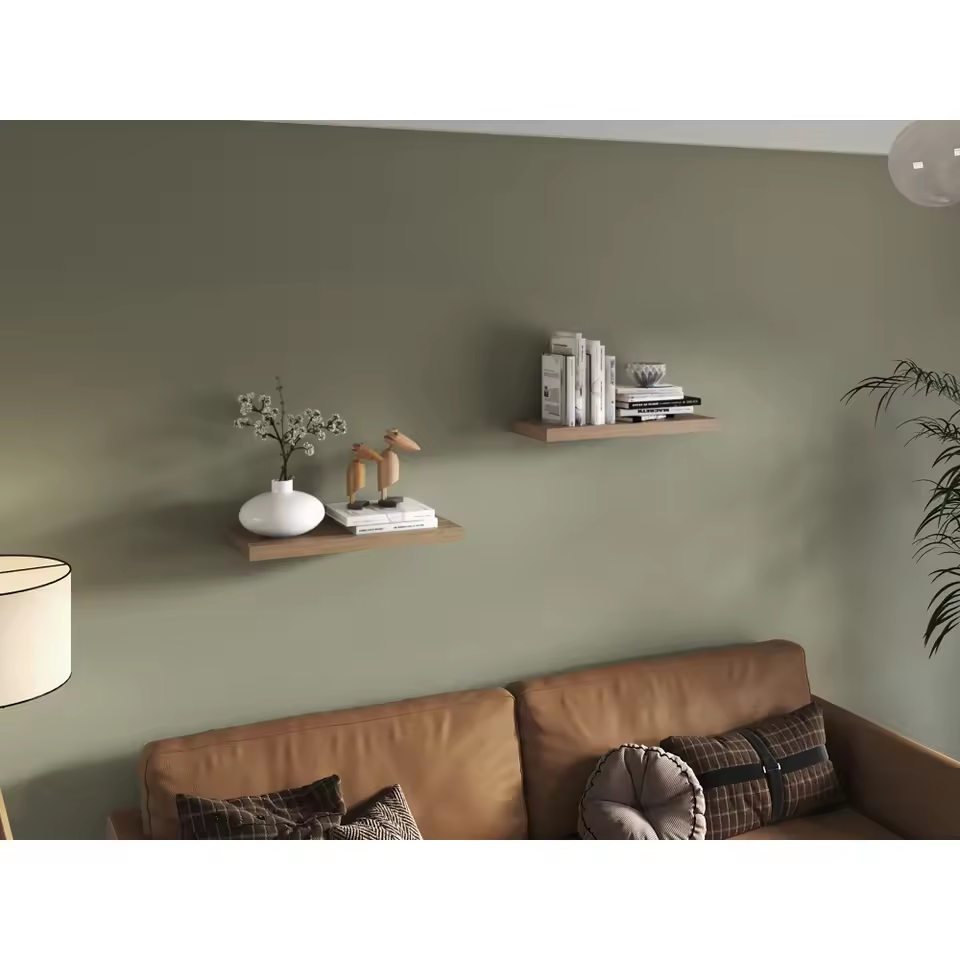
Installation Guide: How to Install Floating Bookshelves Safely
Installing floating bookshelves requires precision to ensure safety and a seamless look. Follow these steps for a secure setup:
- Plan and Measure:
- Use a level to mark shelf positions, ensuring horizontal alignment.
- Consider wall studs for stability; use a stud finder to locate them.
- Choose Mounting Hardware:
- Select heavy-duty brackets rated for your shelf’s weight. For a clean look, opt for bookshelves with brackets hidden behind panels.
- Use toggle bolts or anchors in non-stud areas for added strength.
- Mark and Drill:
- Lightly pencil bracket positions.
- Drill pilot holes slightly smaller than your screws to prevent wall damage.
- Secure Brackets:
- Attach brackets firmly to the wall. For multi-tiered setups, stagger brackets for even weight distribution.
- Double-check alignment before final tightening.
- Install the Shelf:
- Slide the shelf onto brackets and tighten screws completely.
- Ensure no wobbling; adjust brackets if needed.
- Safety Checks:
- Test load capacity with lighter items first. Avoid overloading—never exceed the bracket’s weight limit.
- Inspect mounts periodically for loosening.
Key Tips:
- Use a helper to hold the shelf during installation.
- For large shelves, consider professional assistance to avoid structural stress.
- Glass or heavy materials? Prioritize stud-based mounting.
Proper installation transforms floating bookshelves into durable, long-lasting fixtures that enhance both style and safety. Always follow manufacturer guidelines for your specific product.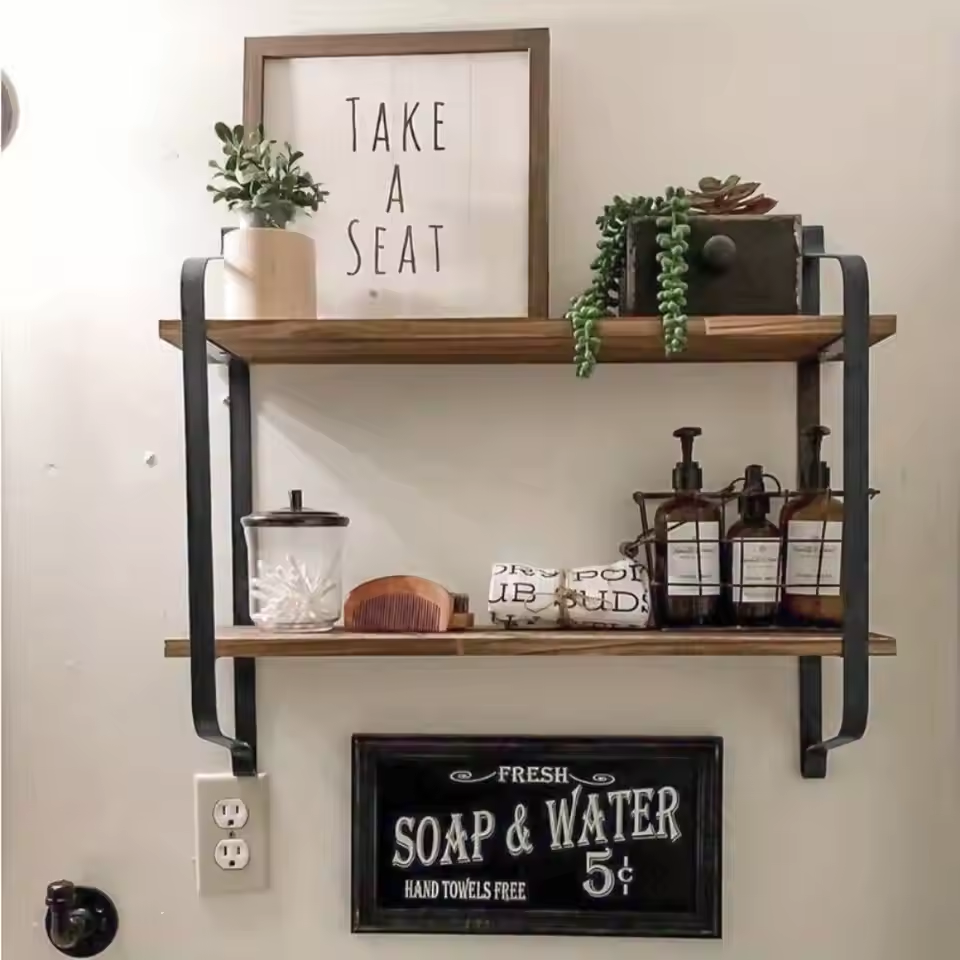
Choosing the Right Materials for Your Floating Shelves
Selecting the right material for floating shelves balances aesthetics, durability, and practicality. Here’s a guide to popular options:
- Wood:
- Pros: Warmth and natural beauty (e.g., oak, walnut). Plywood is budget-friendly but less durable.
- Cons: Requires sealing for moisture resistance; heavier than alternatives.
- Best for: Cozy, rustic, or mid-century modern spaces.
- Metal:
- Pros: Industrial or minimalist appeal (stainless steel, iron). Lightweight yet sturdy for heavy items.
- Cons: May show scratches; avoid in humid areas unless powder-coated.
- Best for: Contemporary kitchens or industrial-style rooms.
- Glass:
- Pros: Creates an airy, see-through look. Clear or frosted options add elegance.
- Cons: Prone to scratches; needs secure mounting for safety.
- Best for: Modern living rooms or bathrooms where lightness is key.
- Composite Materials:
- Pros: Eco-friendly options like recycled plastic or MDF (medium-density fiberboard). Affordable and moisture-resistant.
- Cons: Less durable than solid materials; may feel synthetic.
- Best for: Budget-conscious buyers or high-humidity areas (e.g., bathrooms).
Considerations:
- Weight Capacity: Metal and wood handle heavier loads better than glass or MDF.
- Maintenance: Opt for sealed or coated materials in high-traffic areas.
- Design Theme: Match the material’s texture and color to your room’s palette.
For longevity, prioritize materials that align with your space’s use and style. A sturdy floating shelf not only looks great but also withstands daily wear and tear.
Maximizing Space with Floating Bookshelf Designs
Floating bookshelf designs offer ingenious solutions for compact spaces, turning underutilized walls into functional storage hubs. Here’s how to optimize space effectively:
- Vertical Stacking:
- Install shelves vertically in rows to create a ladder-like structure, maximizing vertical storage without floor clutter. Ideal for narrow walls or entryways.
- Corner Optimization:
- Use L-shaped or triangular shelves in awkward corners. For example, a curved shelf in a bathroom corner can hold toiletries and towels.
- Hybrid Systems:
- Combine floating shelves with enclosed cabinets. Place heavy items in cabinets and lightweight decor (e.g., books, plants) on open shelves for a layered look.
- Height Variation:
- Stagger shelf heights to create visual interest while utilizing uneven wall spaces. Lower shelves can display decor, while upper tiers hold books.
- Niche Integration:
- Install shelves above existing furniture, like kitchen counters or beds, to add storage without dominating the room.
- Slim Profiles:
- Opt for narrow, shallow shelves in tight spaces (e.g., hallway nooks) to avoid bulkiness while still providing storage.
Smart Tips:
- Use clear or light-colored shelves to keep spaces feeling airy.
- Add hooks beneath shelves for keys, scarves, or tools.
These designs transform walls into multipurpose zones, ideal for apartments, small homes, or clutter-prone areas. Every inch counts—with thoughtful planning, floating bookshelf designs make small spaces feel expansive and organized.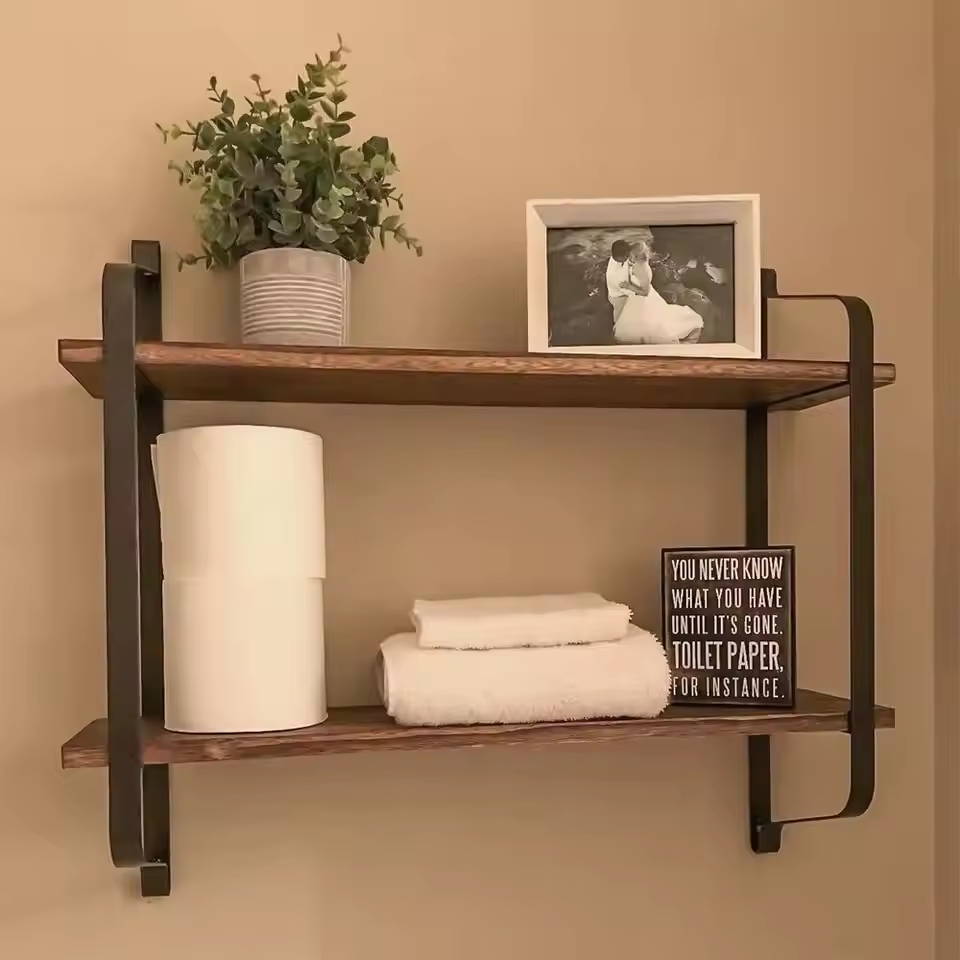
Creative Decoration Ideas for Floating Shelves
Floating shelves are versatile canvases for creativity, transcending mere storage to become statement decor. Here’s how to elevate their aesthetic impact:
- Art and Greenery:
- Display small sculptures, framed art, or potted plants (e.g., succulents or trailing ivy) to infuse life into walls.
- Themed Collections:
- Curate niche items like vintage globes, travel souvenirs, or clock collections. A minimalist shelf can showcase a single striking piece.
- Functional Flair:
- Place small appliances (e.g., coffee makers), charging stations, or decorative trays on lower shelves for practical elegance.
- Lighting Accents:
- Mount battery-operated LED strips beneath shelves for ambient glow, or place candle holders for cozy illumination.
- Textural Layers:
- Combine materials: stack woven baskets, textured pottery, and smooth glass vases for visual depth.
- Personal Mementos:
- Arrange family photos, travel photos, or handwritten notes in frames for a personalized touch.
Pro Tips:
- Balance symmetry with asymmetry (e.g., a tall vase paired with small books).
- Use shelves as color accents—paint them bold hues to contrast with neutral walls.
Whether minimalist or maximalist, floating shelves let you turn blank walls into dynamic showcases of personality and style.
Common Mistakes to Avoid When Installing Floating Shelves
Installing floating shelves demands precision to prevent safety hazards or structural damage. Here are key mistakes to avoid:
- Ignoring Wall Studs:
- Relying solely on drywall anchors for heavy shelves risks sagging or collapse. Always secure brackets to wall studs whenever possible.
- Improper Measurement:
- Skipping level tools or misaligning brackets leads to uneven shelves. Double-check horizontal alignment and spacing between tiers.
- Overloading Shelves:
- Exceeding the bracket’s weight limit strains mounts. Distribute weight evenly and avoid placing heavy items (e.g., large TVs) on lightweight brackets.
- Poor Bracket Selection:
- Using low-quality or under-sized brackets compromises stability. Match brackets to the shelf’s material and intended load.
- Skipping Pilot Holes:
- Drilling without pilot holes may crack walls or strip screws. Pre-drill holes slightly smaller than the screw diameter.
- Neglecting Safety Checks:
- Test shelves post-installation by gently pushing on them. Ensure no wobbling; reinforce loose mounts immediately.
Solutions:
- Use a stud finder, quality tools, and manufacturer-recommended hardware.
- Start with lightweight items and gradually add heavier decor.
Avoiding these pitfalls ensures floating shelves remain both functional and safe for years. Always prioritize stability over aesthetics during installation.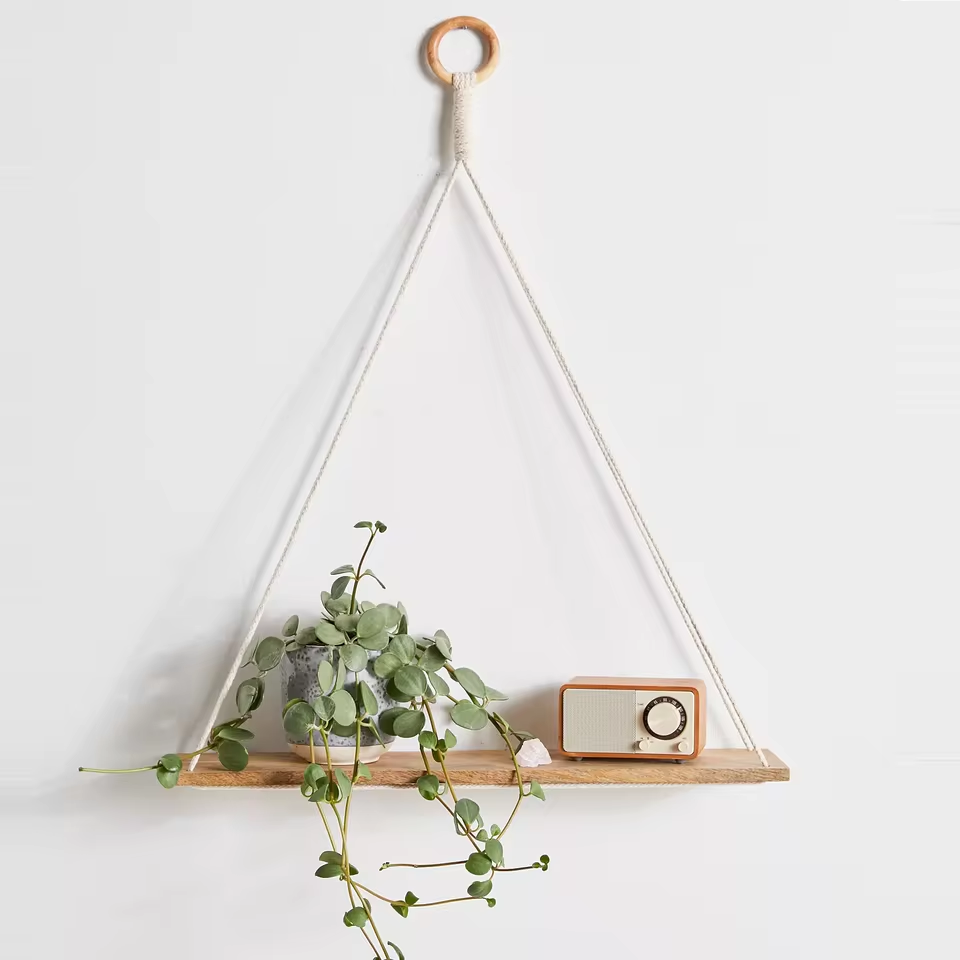
Future Trends in Floating Shelf Technology and Design
The future of floating shelves merges innovation with sustainability, redefining storage aesthetics. Here are emerging trends to watch:
- Smart Integration:
- Shelves with built-in USB ports, wireless charging pads, or motion-activated LED lighting will become standard in tech-savvy homes.
- Sustainable Materials:
- Eco-conscious designs prioritize recycled plastics, bamboo, or carbon-neutral composites. 3D-printed shelves reduce waste while enabling custom shapes.
- Adaptive Designs:
- Motorized shelves that adjust height via remote control cater to accessibility needs, while magnetic mounts allow instant reconfiguration.
- Holographic Illusions:
- Holographic panels or augmented reality (AR) apps will create “floating” effects without physical shelves, blending virtual and real storage.
- Modular Systems:
- Interlocking panels let users expand or reshape shelves as needs evolve, reducing replacement waste.
- Biometric Safety:
- Fingerprint-locked shelves or childproof compartments enhance security for valuables or breakables.
These trends reflect a shift toward eco-conscious tech and user-centric flexibility. As floating shelves evolve, they’ll balance cutting-edge functionality with timeless design, becoming essential smart-home elements.
